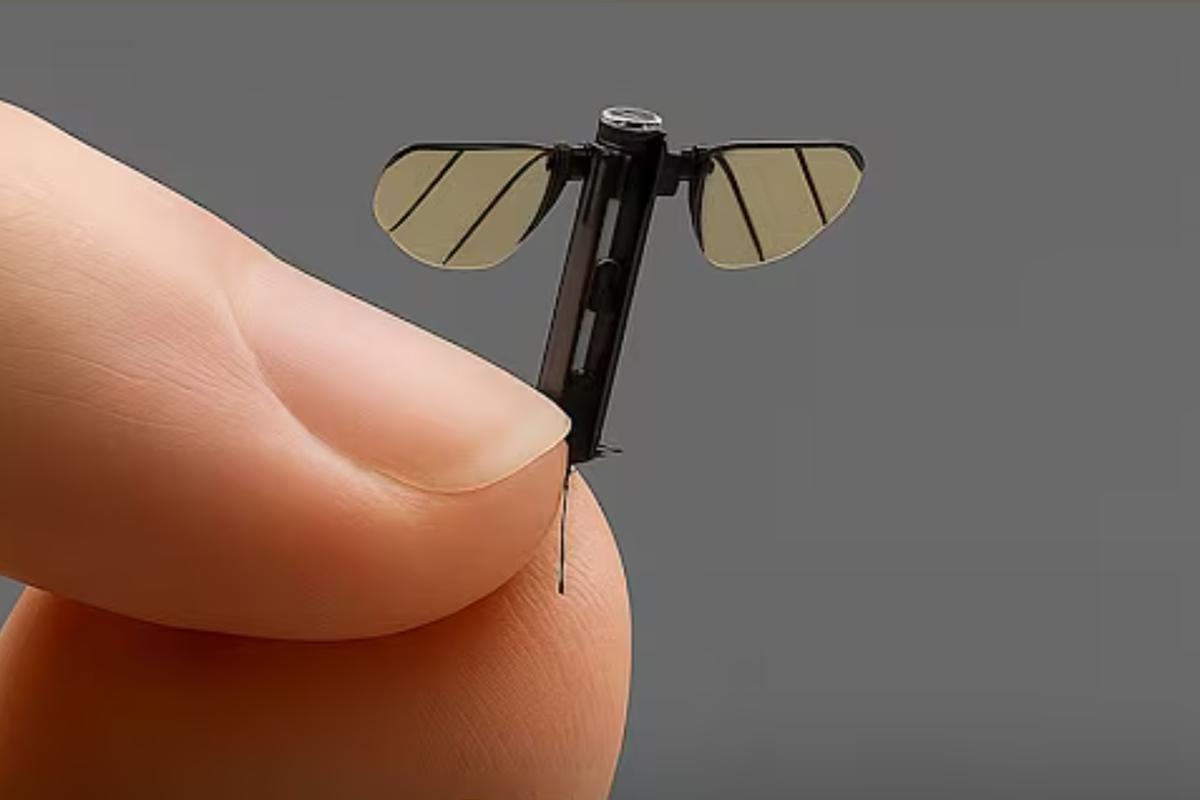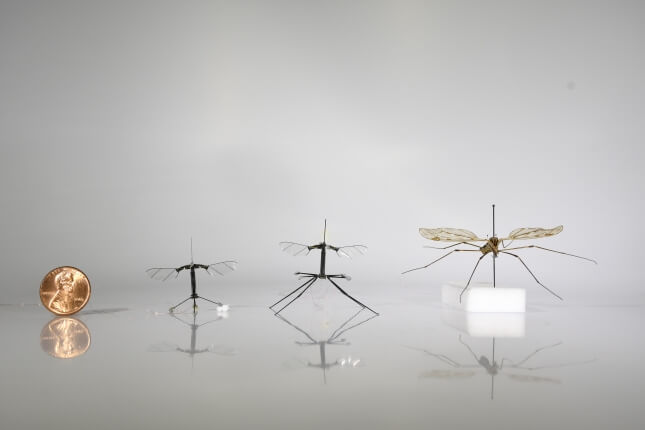
A military research institute in China has unveiled a spy drone that is the same size and shape as a mosquito.
The tiny unmanned aerial vehicle (UAV) features hair-thin legs and two wings, which can be controlled via a smartphone.
Built by researchers at the National University of Defence Technology (NUDT) in China’s Hunan province, the mosquito drones come equipped with sensors that make them useful for covert military operations.
“Here in my hand is a mosquito-like type of robot,” Liang Hexiang, a student at NUDT, told CCTV 7, a state-run military channel.
“Miniature bionic robots like this one are especially suited to information reconnaissance and special missions on the battlefield.”
The gadget is part of a growing trend of micro drones for use in both commercial and military applications.
In April, the Harvard Microrobotics Lab at Harvard University in the US unveiled the latest iteration of its RoboBee drone, capable of flying and landing in a similar way to a crane fly.

The researchers behind it claim that it will be used for things like environmental monitoring and disaster surveillance, while a future application could include artificial pollination.
“RoboBee is an excellent platform to explore the interface of biology and robotics,” postdoctoral researcher Alyssa Hernandez said at the time.
“Seeking bioinspiration within the amazing diversity of insects offers us countless avenues to continue improving the robot. Reciprocally, we can use these robotic platforms as tools for biological research, producing studies that test biomechanical hypotheses.”
The US military has also procured micro drones from Norway for use in surveillance missions. The Black Hornet drones come equipped with cameras and thermal imaging, while also being small enough to fit in a pocket.
Since 2006, the Department of Defense’s secretive DARPA lab has also been working on hybrid insect drones, which embed tiny electronics into real insects.
These cyborg insects can be controlled via electrical impulses, allowing cockroaches and beetles to be used for surveillance purposes.
Early Da Vinci designs could help make modern drones stealthier, scientists say
Chinese scientists say they have developed new technology to weaponise 6G
UK cyber attacks set to continue amid ‘fraud pandemic’, security experts warn
Indoor solar panel can generate electricity from fluorescent lightbulbs







